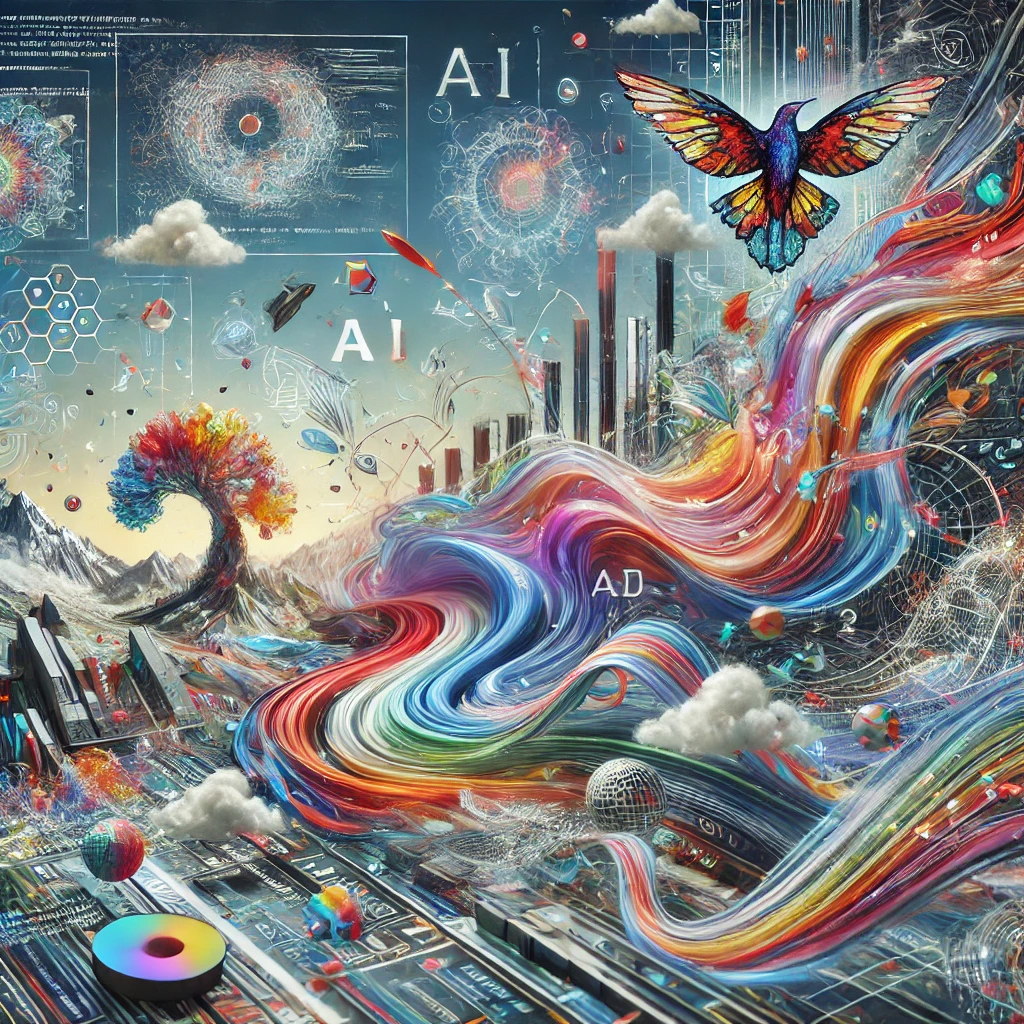Have you ever found yourself overwhelmed by the demands of content creation, design work, or data analysis? I know I did—until I discovered generative AI. It was a game-changer for me. Tasks that once took hours or even days now only take minutes, thanks to the incredible capabilities of AI-assisted tools.
In this article, we’ll dive deep into what generative AI is and how it’s transforming industries like entertainment, product design, and more. By the end, you’ll have a clearer understanding of how this technology works and why it’s fast becoming an indispensable tool for anyone looking to boost creativity and productivity.
What is Generative AI?
Generative AI is a type of artificial intelligence designed not just to analyze data but to create new content—be it text, images, music, code, or even data. Traditional AI systems focus on interpreting existing information, but generative AI takes it a step further by synthesizing entirely new material based on patterns it has learned.
At the heart of this technology are powerful models like GPT-3, DALL-E, and Midjourney, which use deep learning and neural networks to train on vast datasets. These models don’t just memorize; they learn the underlying structures of the content they analyze. Then, they use this knowledge to generate brand-new creations that follow the same stylistic rules.
Let me give you an example. GPT-3, a language model, is trained on millions of pages of text. It doesn’t just spit out copied phrases—it understands how to craft sentences, build narratives, and mimic different tones. All you have to do is give it a prompt, and it produces original, coherent text. The same applies to other media. AI models can generate artwork, music, and even code based on existing examples, making each creation unique but recognizable in style.
Key Benefits of Generative AI in Content Creation
Speaking from personal experience, generative AI has been a massive upgrade in how I approach content creation. It has allowed me to produce high-quality, original content across formats at a fraction of the time I used to spend.
One of the biggest advantages is speed. What used to take me hours—writing and editing—can now be done in minutes with AI-powered tools. For instance, I can input a topic, select a tone, and let the AI generate a full draft in almost no time. Of course, it’s not perfect right out of the gate, but it gives me an excellent starting point, allowing me to focus on refining and polishing. In many cases, the AI even introduces ideas I wouldn’t have considered on my own.
This approach has completely transformed my workflow. Instead of spending endless hours on the basics, I can devote more time to fine-tuning, which has improved the overall quality of my work. And because I’m able to iterate faster, I’ve found that my creativity flows more freely.
Another incredible benefit is customization. With the right tools, you can fine-tune AI models to reflect your specific niche or brand voice. Before, this level of personalization required a team of people. Now, it’s something I can achieve with just a well-trained AI model.
The scale at which AI can operate is astounding. While a human might be able to create a handful of articles or designs in a day, an AI system can generate thousands of unique variations in the same amount of time. This opens up huge possibilities for industries like personalized content and targeted advertising.
Applications of Generative AI Across Industries
Generative AI is not just transforming content creation—it’s impacting entire industries. In entertainment, product design, and scientific research, this technology is poised to revolutionize how things are done.
In entertainment, for instance, AI is already changing the way we create. Imagine a movie studio generating entire scenes, complete with realistic CGI characters, based on nothing more than a script. Or think of a video game that procedurally generates endless levels, quests, and characters, allowing creators to focus on the story.
The design world is also experiencing an AI-driven revolution. Tools like DALL-E allow graphic designers to produce multiple concepts in a fraction of the time, which they can then refine. Interior designers can now feed an AI system image of a space and instantly receive photorealistic renderings with different furniture and décor options. The same goes for product design. Instead of manually creating 3D models, AI can generate thousands of variations, allowing designers to explore a broader range of possibilities before zeroing in on the perfect option.
Even in scientific fields like drug discovery, generative AI is making waves. By generating novel molecular structures, AI helps researchers predict therapeutic properties more quickly, speeding up the process of developing new medicines.
In areas like finance and logistics, AI-generated synthetic data can help run more robust simulations and improve risk assessment. In software development, generative models are capable of writing code, automating tedious tasks, and leaving programmers free to focus on more complex problem-solving.
How AI is Changing Design and Entertainment
Let’s zoom in on how generative AI is reshaping design and entertainment.
In design, AI is democratizing creativity. Take logo design, for example. Instead of manually sketching out ideas for hours, designers can now input a few parameters into an AI tool and instantly receive professional-grade logo options. The AI doesn’t replace the designer—it accelerates their process and expands their creative possibilities. I’ve found that AI-generated suggestions often inspire new directions I hadn’t initially considered.
The same principles apply to web design, product development, and even fashion. AI can quickly generate layouts, product renderings, and clothing designs based on specific preferences. Designers still have the final say, but the AI dramatically speeds up the initial concept phase, enabling more experimentation.
In entertainment, the potential is equally exciting. Studios are already using AI to generate realistic crowd scenes, saving both time and money. Rather than hiring hundreds of extras or painstakingly animating individual characters, AI can generate entire crowds with unique appearances and movements. And, as a creator, you can easily change settings by adjusting a few parameters, whether it’s a city street or a medieval village.
We’re also seeing AI-generated art and music gain traction. Tools like DALL-E and Midjourney are producing visually stunning artwork, while systems like Jukebox are composing original songs. This AI-generated content isn’t just a novelty—it’s legitimate, sparking new conversations about the nature of creativity and the role of technology in artistic expression.
The Future of Generative AI: What’s Next?
Generative AI has already made impressive strides, but its full potential is still ahead of us. One area to watch is the development of multimodal AI systems that can handle various types of content at once. Imagine an AI capable of writing a script, creating character designs, generating storyboards, and even composing the soundtrack. This kind of holistic content creation pipeline could significantly streamline creative workflows.
As AI technology matures, we’re also likely to see more accessible, user-friendly tools. Eventually, non-technical users will be able to harness the power of generative AI without needing to understand complex coding or machine learning models. The future is promising, and I’m excited to see how far we’ll go.


